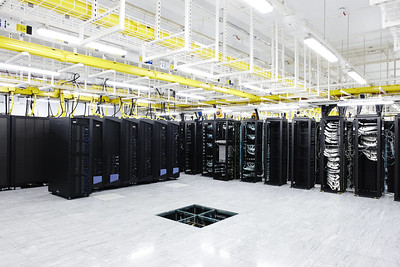Cables are some of the most pervasive objects you’ll find in a data center. Unfortunately, they can also be difficult to deal with and potentially dangerous. A data center of average size could easily contain thousands of individual power and networking cables of various types, and if you don’t keep them well organized, your data center may end up looking like a Silly String battleground. Worse still, you might not know which cables go where, making it difficult to ensure optimal equipment performance and troubleshoot problems.
That’s the bad news about data center cables. The good news is that, with the right approach, it’s possible to conquer cabling chaos. Keep reading for tips on managing data center cables in an effective and reliable way.
The ‘What’ and ‘Why’ of Data Center Cables
Arguably, cables are the most important component of virtually every data center. Without cables, you can’t supply electricity to keep your servers and other equipment humming.
Wireless networks are not practical for data centers because they are less secure, slower, and less reliable than wired networks. They are also more vulnerable to hacking, have limited ability to manage collisions, and can experience outages.
Wired networks are still the best choice for data centers because they provide the high levels of security, speed, reliability, and scalability that data centers require.
Now, all of these cables might not be an issue if it didn’t matter which cable plugs in where. Unfortunately, that’s not the case. Both ends of most cables need to connect somewhere very specific. A networking cable might need to run from a certain server to a certain switch to ensure that the server can connect to the right subnet, for example, or to minimize the distance that packets have to travel. Likewise, a power cable that works with one type of server may not work for another.
For these reasons, keeping track of which cables run where is critical for data center operations. Neatly managed cables are not just nice to look at; they’re essential for data center reliability and performance.
Tips for Managing Data Center Cables
To ensure that it doesn’t look like rats built a nest out of your cables, consider these data center cabling best practices:
- Minimize Cables:The fewer cables you run, the better, because there is less to manage. Look for opportunities to consolidate cabling. Software-defined networking may reduce the number of network cables you have to run, for instance. Upgrading to higher-capacity cables that can handle more network traffic or power can also help.
- Reduce Cable Length: In a similar vein, aim to minimize the length of cables running through your data center so that they take up less physical space. Choose the shortest feasible cables when running new cabling, and consider cutting and crimping cables yourself so you don’t have to settle for the preset lengths that cables come in.

- Designate Cable Pathways: Another best practice for cabling is to designate areas where cables should run as early as possible in your data center’s lifetime. It’s easy for data center cables to end up expanding over time like poorly planned cities, leading to sprawl and chaos. To avoid this, plan ahead by deciding where cables will be placed, being sure that the routes you choose offer plenty of spare capacity for expansion over time. You should also choose cabling locations that won’t restrict airflow or impede physical access to key equipment.
- Tag Your Cables: Labeling data center cables with physical tags is another simple but highly effective way to keep cables neat and organized. And since the amount of data you can fit on a cable tag is limited, consider tagging each cable with a unique identifier, then creating a digital database where technicians can look up the cable based on its identifier to find more relevant information. Using this approach, you can fully document what each cable is used for without trying to fit all that information on a tag that is about the size of your index finger.
- Color-Code Cables: Where possible, color-code your data center cables so that technicians can easily distinguish different cable types. For example, you might use the same color for all networking cables that support a certain capacity. A challenge here is that there is not much color standardization for cables, which means the same types of cables may be available in a variety of colors. You may need to buy cables in bulk or use consistent cable manufacturers to ensure that cable colors in your data center are standardized.
- Monitor for Cable Problems:Manually keeping track of the thousands of cable connections that may exist in your data center is not practical. Instead, deploy software that can monitor connections and automatically alert you to problems like cable disconnects. Monitoring software can also help you keep track of cabling configurations over time so you can determine how cables were previously set up in the event that someone accidentally unplugs cables without noting which ones went where.
It’s hard to get excited about cable management. But if you want to maximize data center efficiency and reliability, it’s worth investing time and effort in developing effective cabling strategies. Relatively simple practices, like cable tagging and color-coding, can go far in reducing the chaos that cables can engender. It is also important to continuously optimise cabling as it, in addition to racks, cabinets & pathways have to comply with TIA-942 requirements per Uptime tiering certification.





